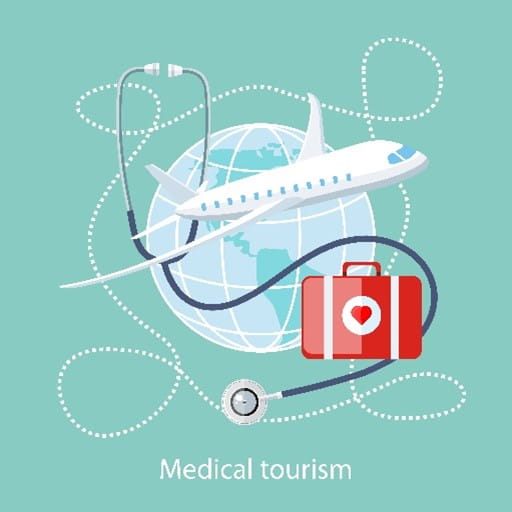Doctor Doctor Gimme the News
Written by Paul Siluch
March 20th, 2024
It always happens in the dead of night. In the Witching Hour, when everything stops. Between midnight and 3 a.m.
Your body hurts. Is it serious or will it go away? Darkness magnifies your fears, especially if it won’t go away.
In most developed countries, we have options when you are in pain. You can call your doctor’s night line. You can go to the hospital emergency room to get assessed and treated if necessary.
Except, as most Canadians know, you often can’t. My community hospital once treated me for a fast-spreading infection in my hand in the middle of the night. Two bags of intravenous antibiotics later, I was fine. If I had had to wait a day, I might not have been.
My community hospital is now closed at night due to staff shortages. Accidents and trauma don’t take nights off, so now everyone has to travel into the city for midnight care.
This article started as a quest to find a good Canadian health care stock. It rapidly veered down a rabbit hole!
Canada, as we all know and brag about, has government-funded health care. And a monopoly on it. Along with Cuba and North Korea, Canada is just one of three countries in the world that ban all private medical access.
You go through the government waiting room door to get care. No other doors are open.
The upside is that you will never be forced into bankruptcy because of an illness. The downside is that your illness may not get the full attention it deserves, or you receive less care because of your rural location (like mine now) or advanced age.
Ours is a system built on rationing. There is only so much money to go around so everyone gets less.
As a result, wait times in Canada have grown dramatically in recent years. The average wait time in most U.S. emergency rooms is about 3 hours. In Ontario, it is closer to 22 hours (source: CBC). Six million Canadians do not have a family doctor today and so are forced to rely on walk-in clinics, telemedicine, and the ER.
Part of the problem is demographics. In 1966, when the Medical Care Act was enshrined in law, we had just 1.5 million Canadians over 65. Today? Over 7 million (Statscan). This wave of grey means an increasingly overburdened system.
Sure, we are more efficient than we were 60 years ago. But with almost five times the number of old people, have we built five times the number of new hospitals or hire five times as many doctors? No, we haven’t.
Creaking health systems are not unique to Canada. The United Kingdom has a dual public-private system and yet its emergency room waiting times now average 12 hours. The jigsaw-puzzle system that is U.S. health care treats those who can pay extremely well but can bankrupt those less well-off.
What’s the answer?
In a completely free market, economics apply to health just as they do to everything else:
When you are young, you trade health for wealth.
When you are old, you trade wealth for health.
Canada’s health care system is not a free market, so there is no trading wealth for anything.

Or are we as purely government-pays-for-everything as we think? It depends on what part of your body hurts. Government care doesn’t consider every part of your body equally even if you think it should.
For example, hands are covered by health care but feet - through podiatrists - are not.
Teeth get put into the same bucket as feet. They have their own set of specialists called dentists who you pay for whatever happens inside your mouth. Yes, a new national dental plan is in the works, but most of us will still pay most of our dental costs.
No coverage for physiotherapy, massage therapy, sports injuries, chiropractic care or naturopaths. Even eye care is largely left to the private sector, except for surgery.
It is a patchwork of coverage, as you can see. If you break a bone, you are covered. If you break a tooth, you aren’t. Imagine breaking a tooth and being told you must wait 12-18 months for a replacement.
Okay a tooth isn’t a bone, but with teeth you have many options. Not so much for a new knee.
Somewhere, Out There
Somewhere out there is the perfect combination of publicly funded health care combined with private care options.

Britain’s system is about 60% government and 40% private. Switzerland is 50% government and 50% private, while the U.S. is about 27% government and 73% private (1991 NIH study).
The Commonwealth Institute ranks eleven European and North American health care systems, of which Canada is the only government monopoly. Norway ranks #1 with Canada at #10 and the U.S. dead last at #11. Norway also suffers from increasing wait times, rising costs, and staff shortages so even #1 isn’t perfect.
There have been two court challenges to Canada’s government health care. Both resulted in completely different outcomes.
The first was in Quebec in 2005. Quebec which, as we all know, is almost a separate country, has its own unique Charter of Rights distinct from Canada’s. Quebec’s government-only health care system was sued under the challenge that access to a waiting list does not constitute access to health care.
Specifically, waiting too long for life-saving surgery violates your right to life guaranteed by Quebec’s Charter and waiting too long in pain violates your right to personal security.
The lawsuit prevailed and private insurance was allowed in Quebec. That province now has a version of private-pay health care, where you can pay for a doctor’s visit at 73 privately-run clinics.
A similar lawsuit was brought nationally against Canada in 2009. It took 11 years and was finally lost in 2020. Canada’s Charter of Rights is the same as Quebec’s, except it includes a Fundamental Justice clause. This means if all citizen experiences are equal (equal long waiting lists, equal inability to find a family doctor), then your right to life and personal security are not violated.

So, you can pay for access in Quebec, but nowhere else. Go figure.
This is Canada, right?
When I’m 64
When the Canada Health Act was first implemented in 1956, we had 1 old (age 65) person for every 9 young people. By 2050 – that’s just 26 years away – we will have 5 old people for every 10 in the population.
We spend 13% of the national budget on health care today. This could double by 2050 (Canadian Public Administration estimate).
Meanwhile, the world has opened to a multitude of private care options. You can travel to the US for specialized surgery, to Mexico for dental work, and to Thailand or India for joint replacement. Even Latvia offers knee replacements for a fee.
They call this “medical tourism,” and it is growing rapidly.
I Still Haven’t Found What I’m Looking For
As I wrote at the beginning, this letter started out as a search for a good Canadian health care investment. It was harder than I thought.
A Canadian discovered insulin. Canadian scientists have pioneered RNA and T-cell discoveries as well as safer heart surgery techniques. But most things invented here get commercialized somewhere else.
Why is that?
In an honest effort to get drug prices down, Canada allows drug patents to last just 20 years, with no extensions. The time from discovery to approval can be as long as 12 years, so the window to make money with a new drug is 8 years or less. It closes quickly.
In the US, the same 20-year patent window applies, but it can be extended by 5 years under certain circumstances. And it is a market ten times the size of Canada’s.
As a result, 73% of all drug patents in the world are filed in the US. Robotic surgery, weight loss drugs, cancer medication…innovation tends to happen in the American market first.
Promising small drug companies up here usually get gobbled up by the US giants. This is exactly what most small drug companies want. Those that grow on their own are few and far between. Most of Canada’s scientists work for foreign companies selling products and drugs to Canadians.
The universe of Canadian health care companies is small and focuses on those areas outside of the Canadian health care system, such as eye care and dentistry. These specialties require fewer approvals and they offer higher profit margins.
Here are the Canadian public health care companies worth more than $1BB:
$7.8 BB Bausch and Lomb Eye care (it was worth $56BB in 2014)
$4.5BB Bausch Health Eye and stomach care
$3.8 BB Curaleaf Cannabis
$1.7BB Tilray Cannabis (was once $300 per share, now $2)
$1.3BB Dentalcorp Dental practice consortium
$0.6 BB Extendicare Nursing Homes, extended care

The Canadian health care sector is tiny, and it would be even smaller if marijuana was excluded.
So much for the Canadian health care sector.
Call Me Maybe
Necessity is of the mother of invention. Maybe there is hope yet for Canada.
Thanks to our vast country and closed system, telemedicine – visiting your doctor or nurse via computer or cell-phone – has grown dramatically. Before the pandemic, very few medical appointments were conducted virtually. Today, about 1/3 of all visits are done through telehealth (Canadian Institute for Health Information), with the market growing about 18% per year.
One of the largest – perhaps the largest - is Telus Health, a division of Telus (TSX T). It makes sense that a telephone company would promote telephone medical visits, and they certainly do. Telus now offers medical appointments as well as counselling, dieticians, senior monitoring, and even remote veterinary services for your pet.
Telus Health is now a $1.7 billion business. This makes it one of Canada’s leading health care companies, despite being part of a larger entity. It may also be the fastest growing of the bunch.
The last few years have been weak ones for Telus shares. The company was forced to rip out its Chinese telecom equipment when the federal government banned several companies from Canadian networks, costing it billions. This slowed their national 5G rollout.
However, the Telus fibre-optic is about 80% complete across Canada and the company is returning to growth. The shares yield 6.7% and the dividend has been increased every year for at least the last 15 years.

And who knows where telemedicine goes next? Remote diagnostics are becoming more common and remote robotic surgery could be next.
Telemedicine and other healthcare innovations offer a glimpse of potential, but it’s just one small piece of the puzzle. Canada’s healthcare system is a complex work in progress, and its future may demand a national conversation. We must address wait times, staffing shortages, and the growing needs of our aging population, all while managing the costs of these services.
Though our system may not be perfect, it reflects our national identity. We can and should celebrate strengths like universal access. We can also benefit by learning from successful models abroad.





